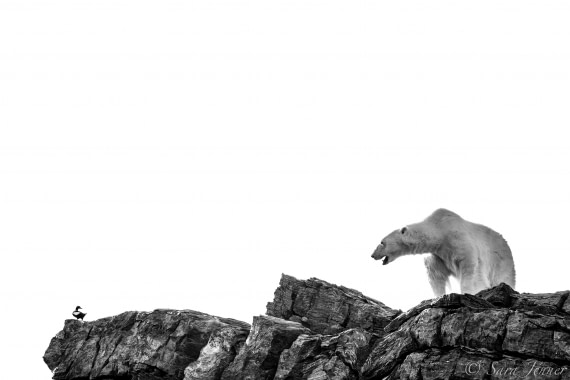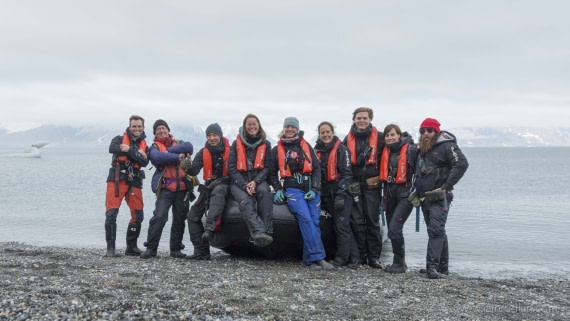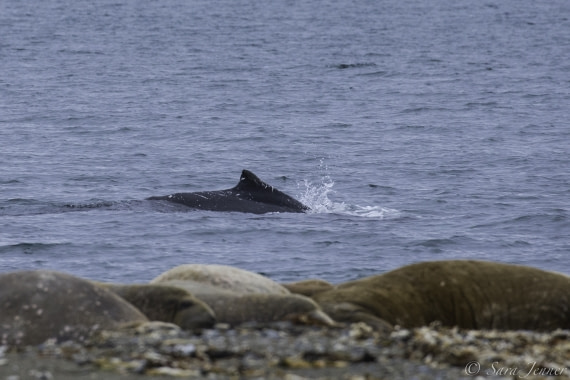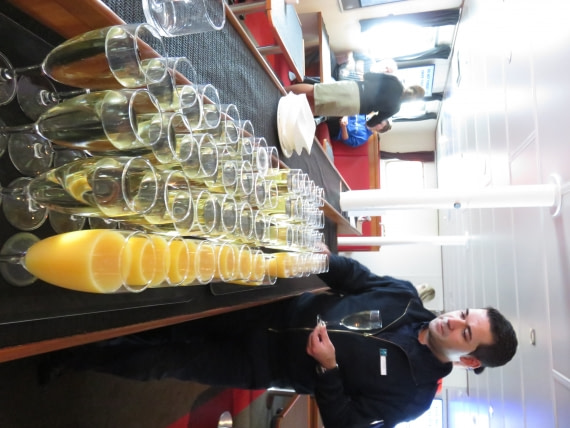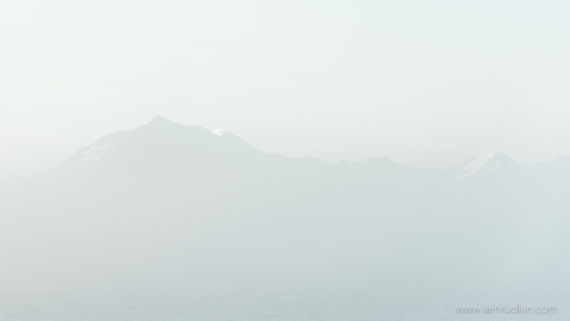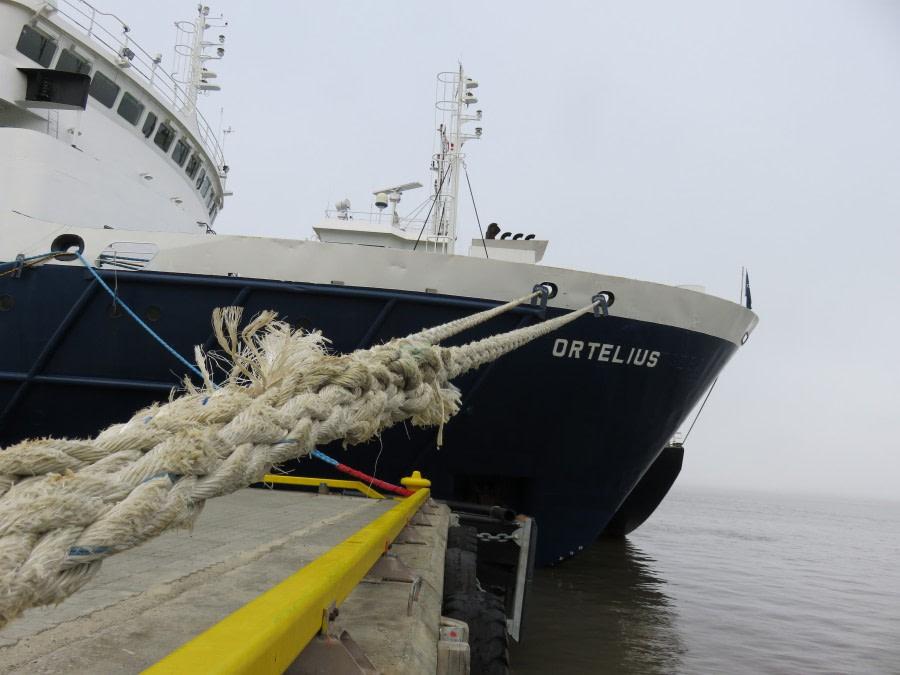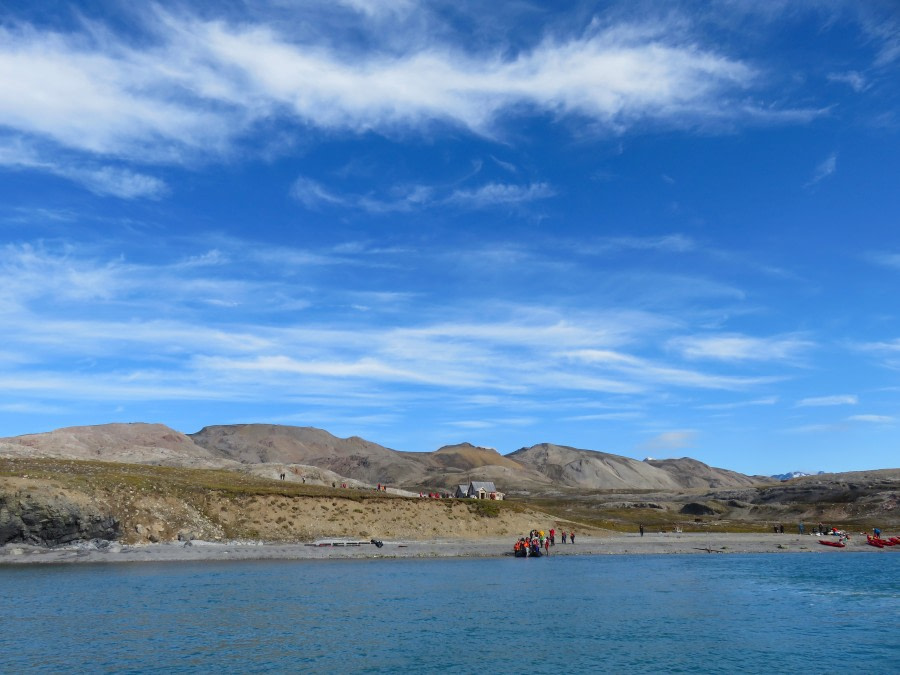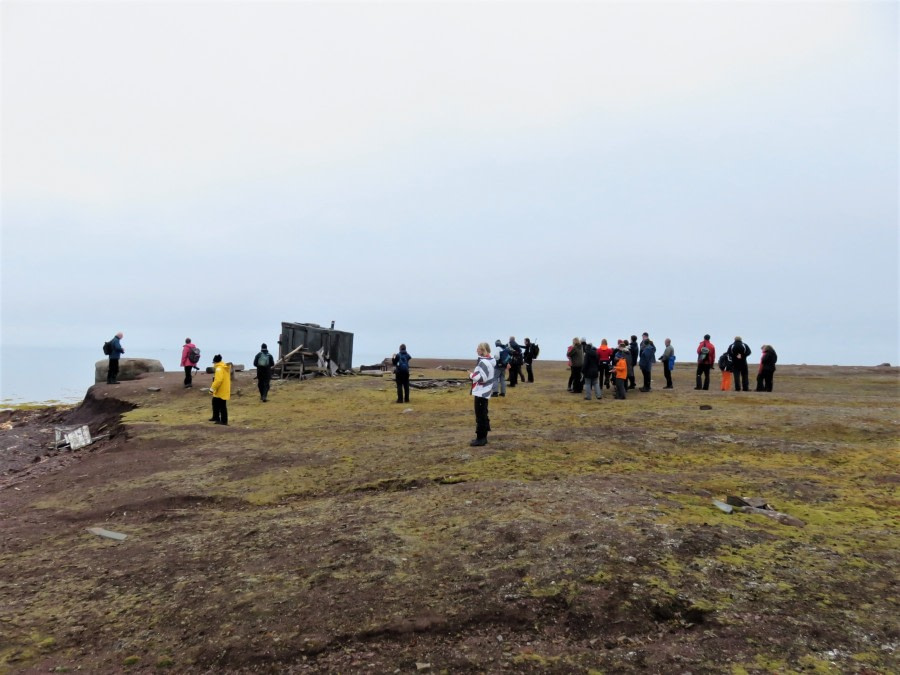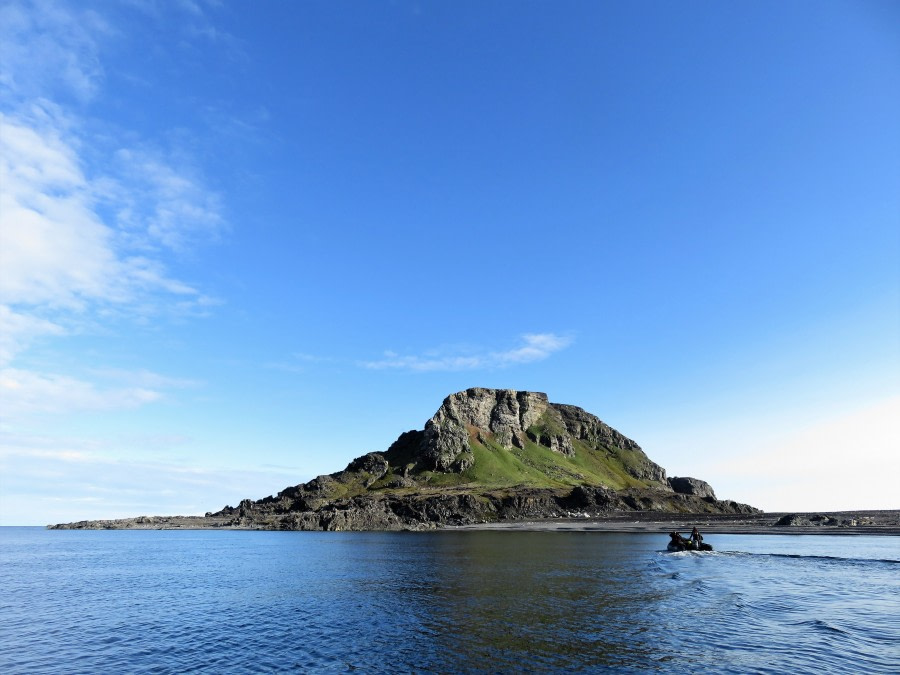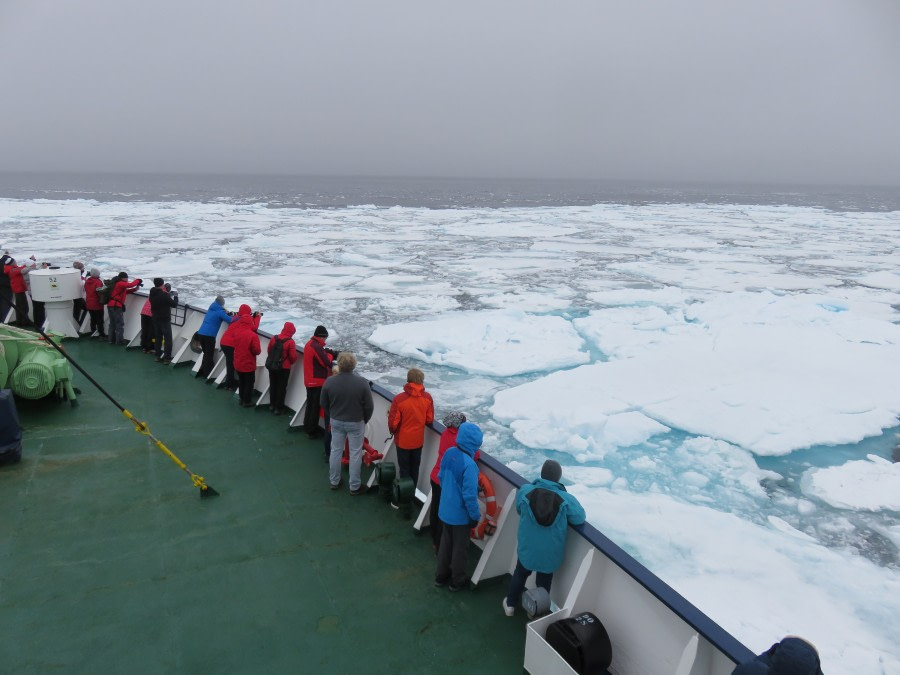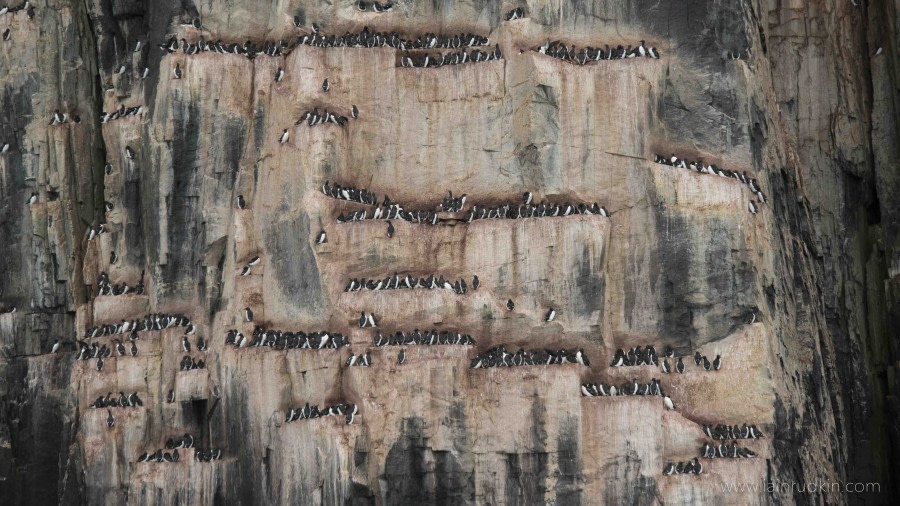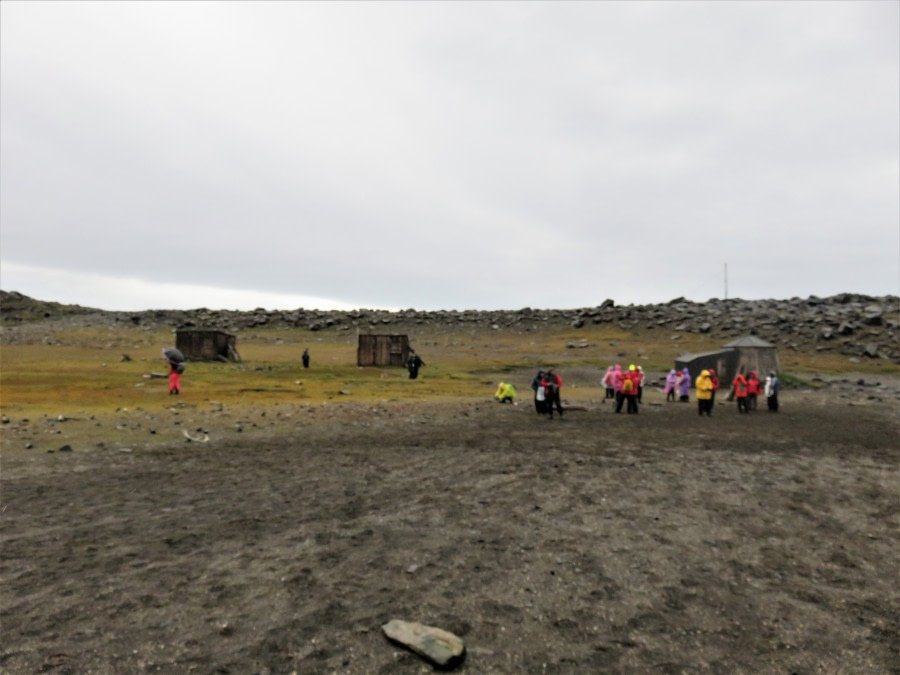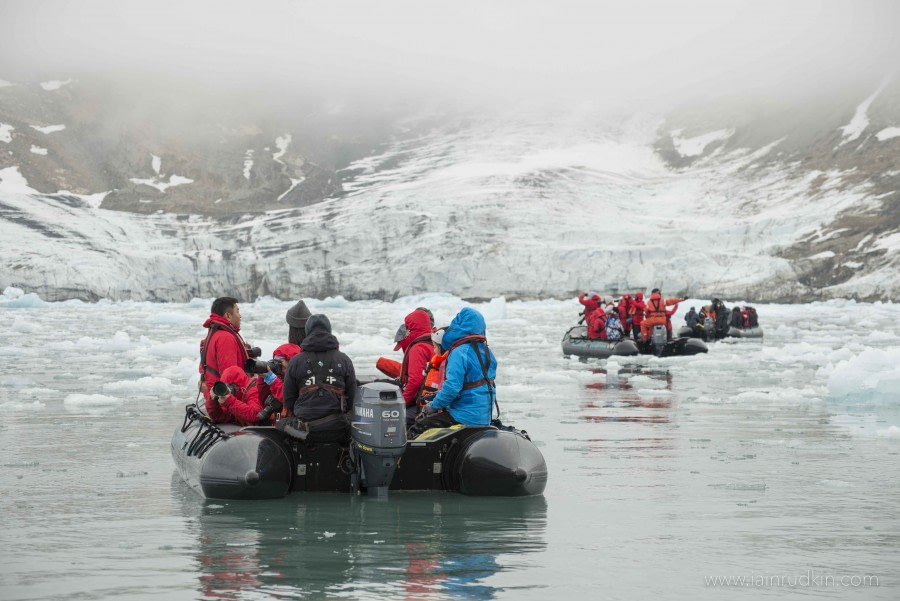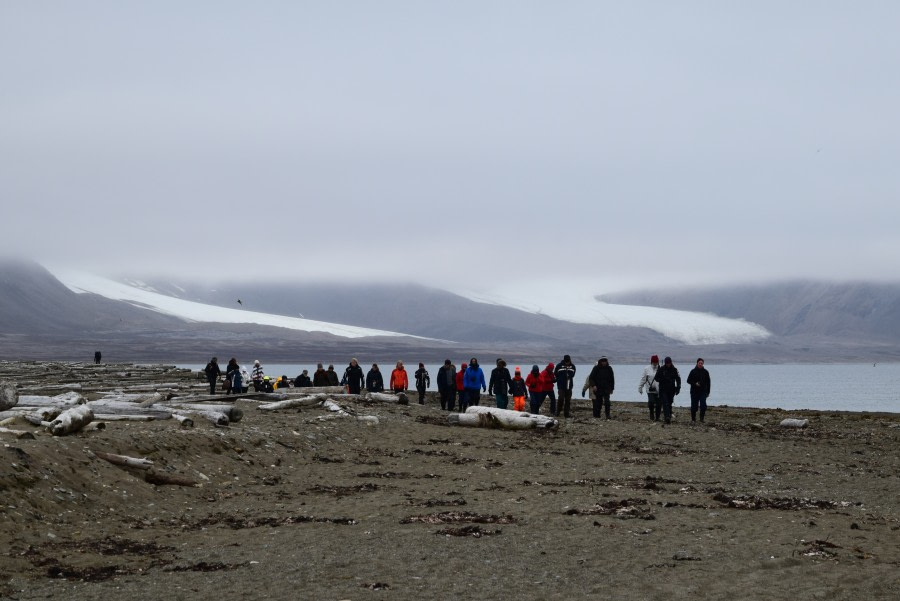| Datum: |
04.08.2018 |
| Positie: |
80°39.2’N, 024°56.0’E |
| Wind: |
SSE 2 |
| Weer: |
foggy |
| Luchttemperatuur: |
+5 |
Today ended up being a day that one wouldn’t, nor could, easily forget. It started early with the Expedition staff heading out toward the island with the intention of scouting the morning’s ventures looking for wildlife. Yet those on board with a keen eye and steady hand on the binoculars could already see that the suspicious white dots up the rocky hat of the island were not just snow patches. Soon all zodiacs were launched and we disembarked the good ship Ortelius and headed straight into the clear skies towards the green mystical mountain kingdom of Polar bears and wily walrus.
In the opening stages, we watched in awe, excitement, and deep soulful pleasure as the resident Polar Bears of the island walked about, gave us many a look back themselves, and strutted their stuff. There was a number of personalities expressed amongst the bears, ranging from a resting lazy fellow, a beautiful lady who turned cannibal, the majestic showman on the rocks, and the fine fellow with a limp who we all cheer for and wish well for a good healing before winter. In total we counted six living bears and one carcass of either a cub or a small bear.
Many a story, tall tale, and questions were told, asked, or explained, but in the end, the greatest story we experience was simply the one we watched with our eyes as we looped and rounded the island. Under the clear skies, we came upon many mysterious scenes and wonderous sights, pleasing every taste of those who wish for the wild.
Many Kittiwake gulls were flying about as they have a nesting colony on the cliffs above. Their eggs and chicks would likely be the only resource of food for these bears trapped on the island. We spotted a few Great skuas, walruses, guillemots and even a few puffins. But as always, the King of the north stole the show. After we returned to the ship we set off North, the true calling of the compass and for some a pinnacle of this journey to the far North. Now knowing our sights were set upon the pack ice, we steamed ahead. A pair of short lectures delivered by Sara and Iain, respectively on Polar Bears and Sea Ice brought a little more clarity to the present days sightings and what lay ahead for the journey. Before dinner most of us enjoyed a nice happy hour drink before recaps by Ali and Phil. Ali told of the events experienced by the expedition team’s early morning scout, which involved an encounter with a surprised and defensive Walrus; resulting in a little early morning drama and a punctured zodiac. This story was followed by tomorrows plans to be in the ice and Phil spoke about how to immigrate to Svalbard.
In the end, after a good dinner, tea or other beverages in us, we headed off to sleep with the anticipation of icy expanses that most only ever dream of, knowing that the day ahead had all the potential in the world to enliven, excite, and fill our souls with the cool pleasures that only the ice of the Northern reaches of the planet could provide.

